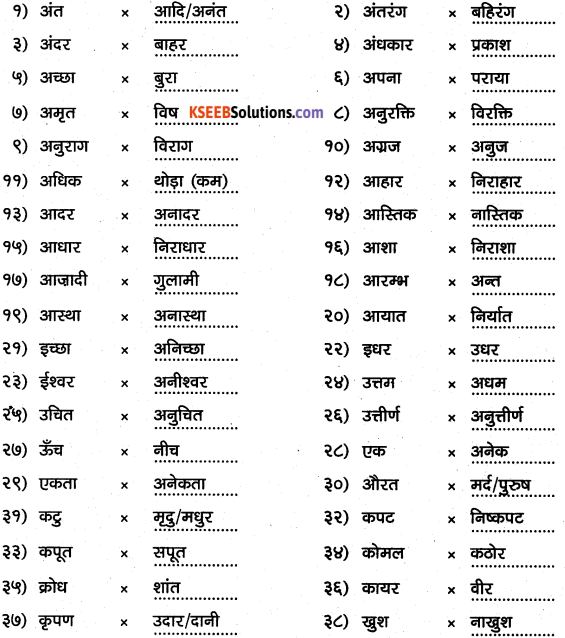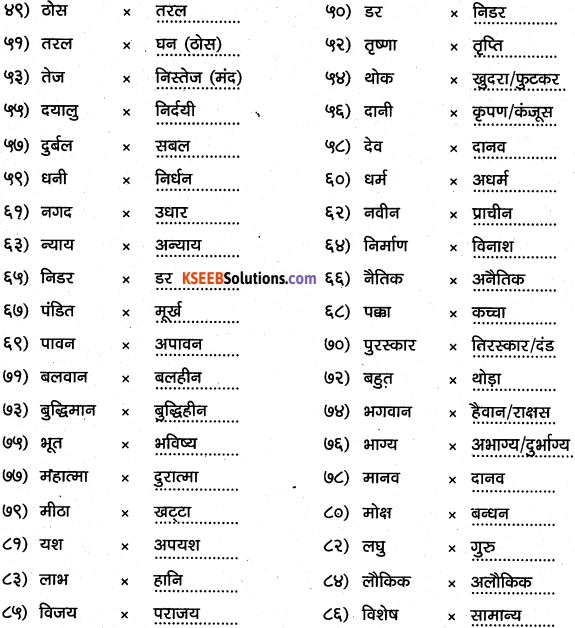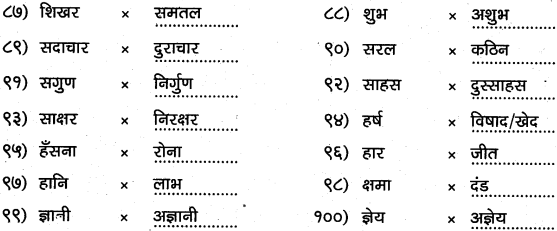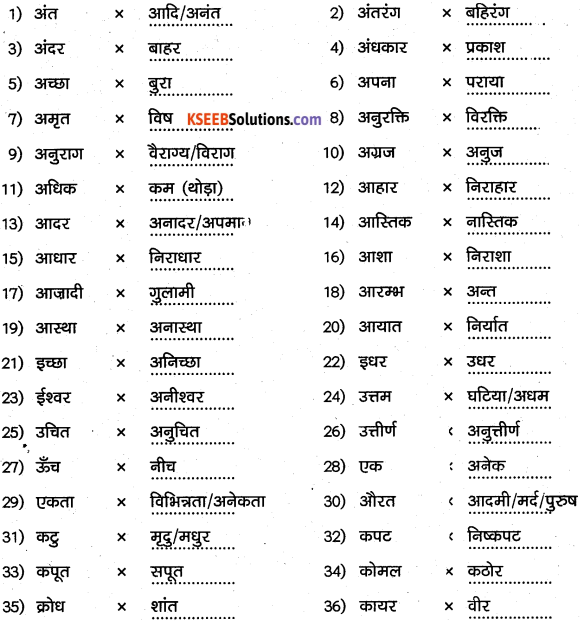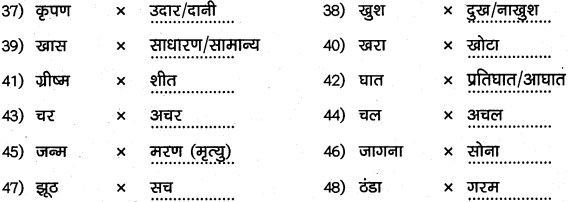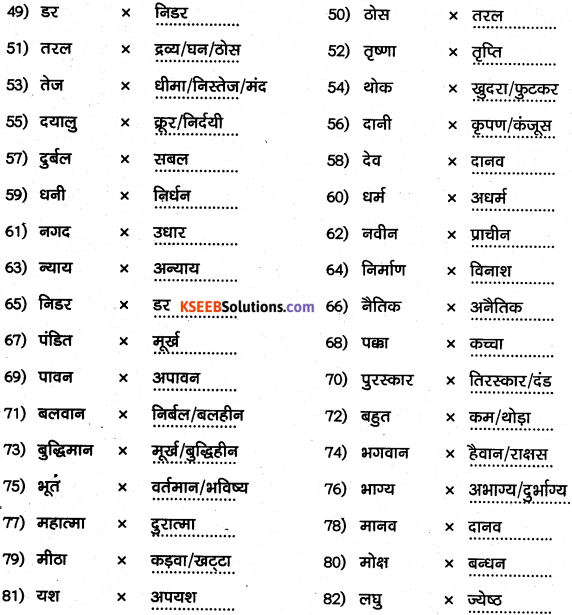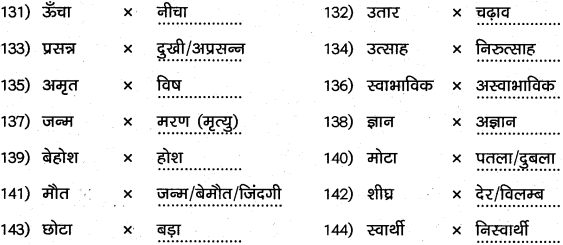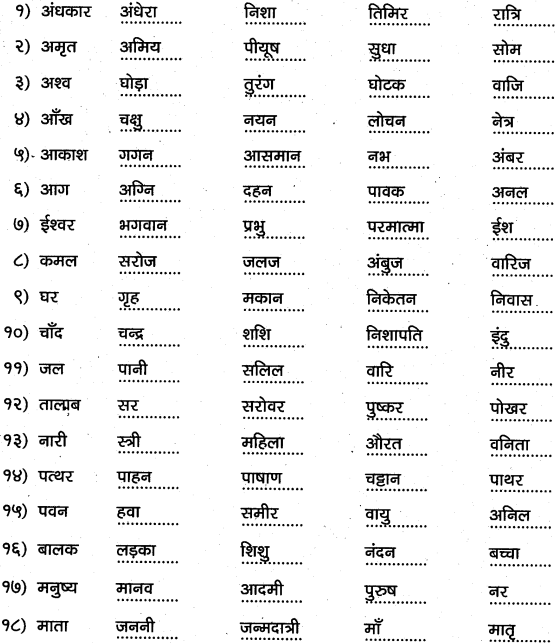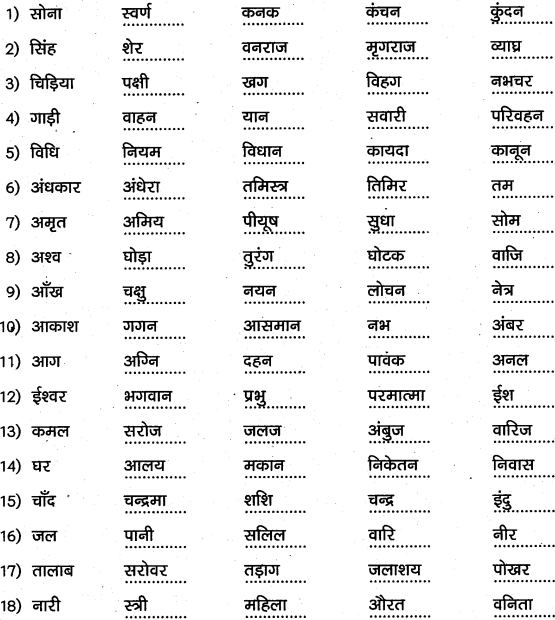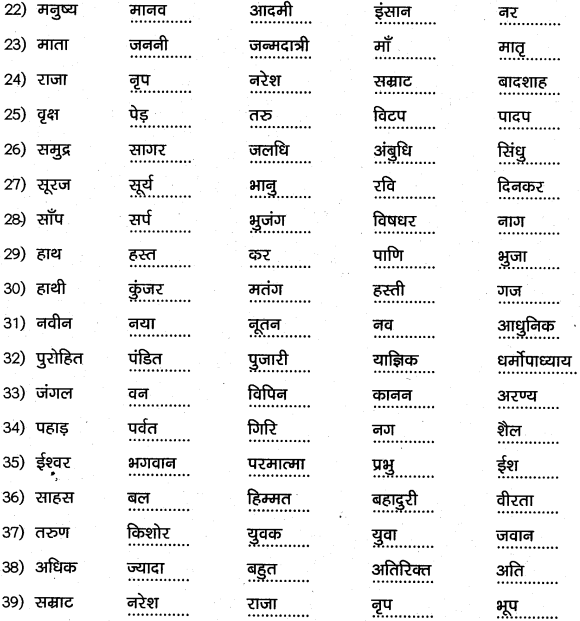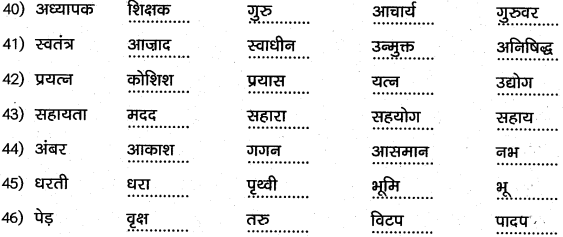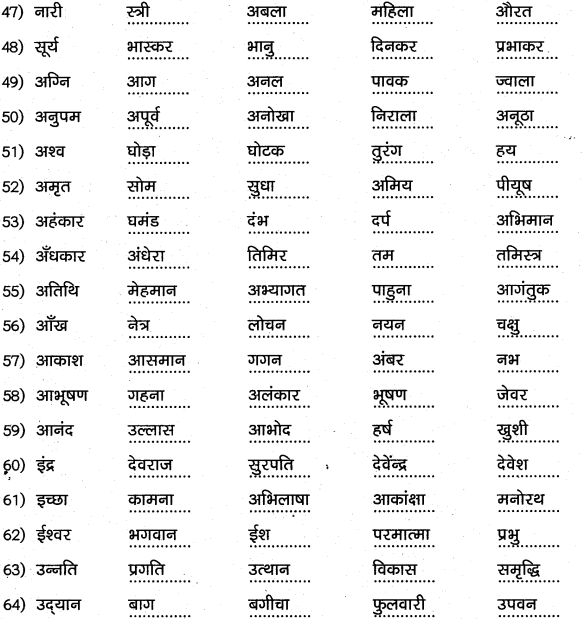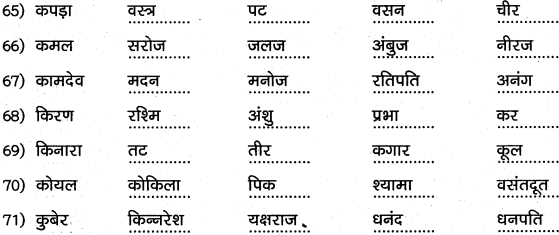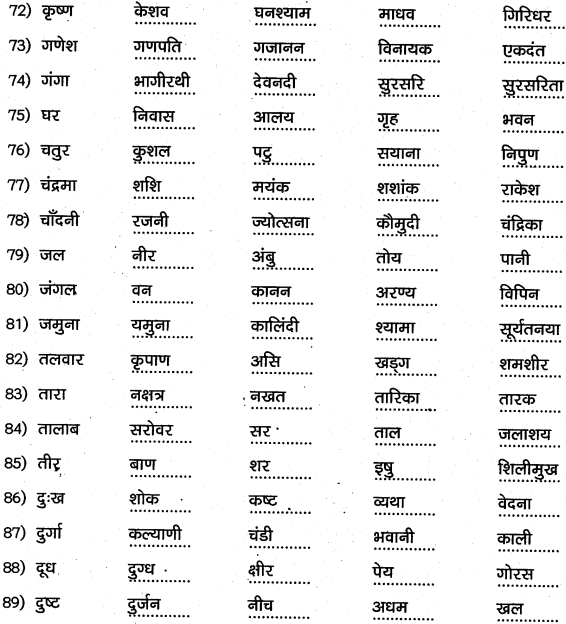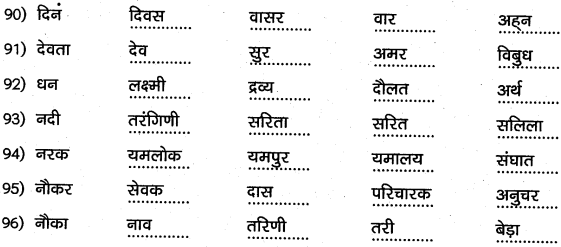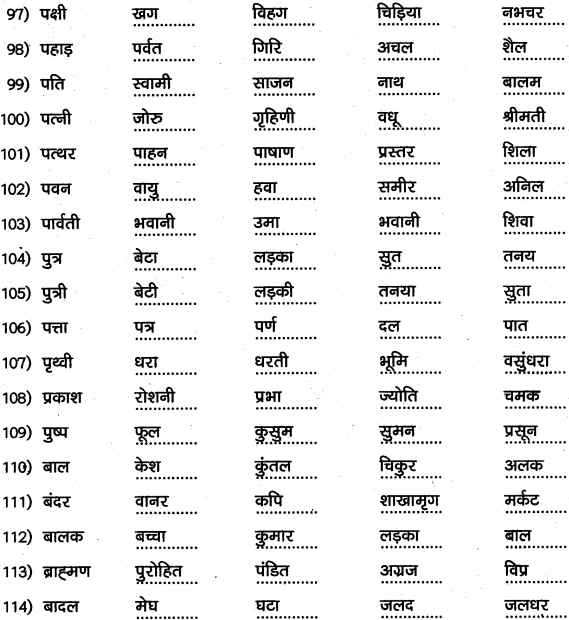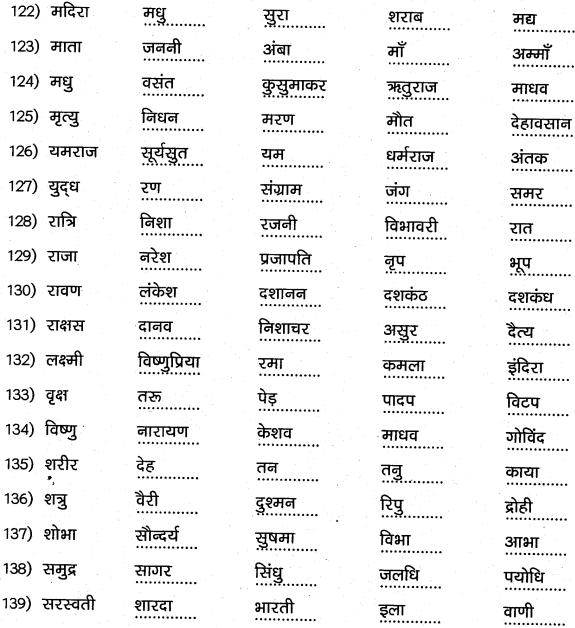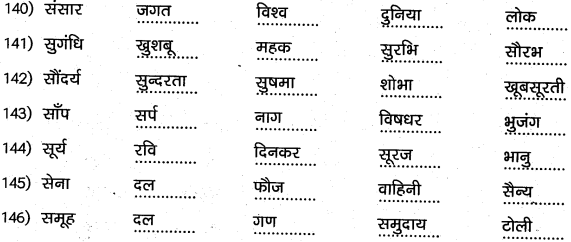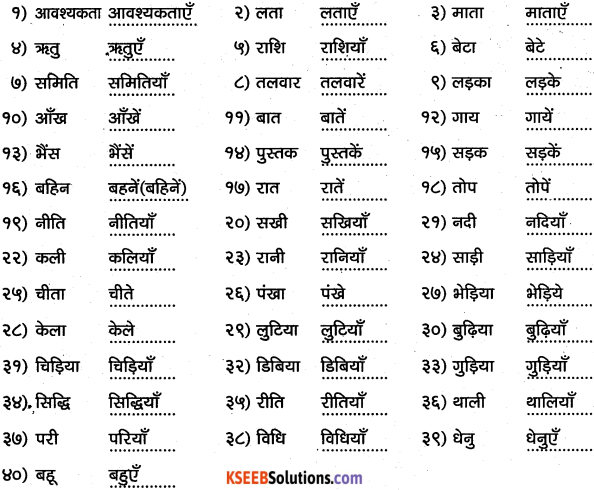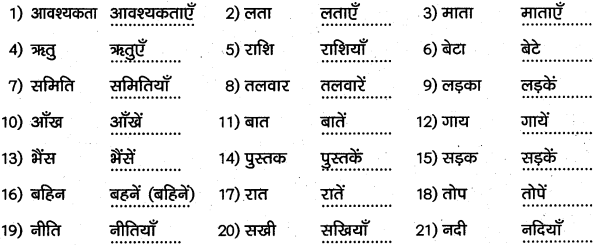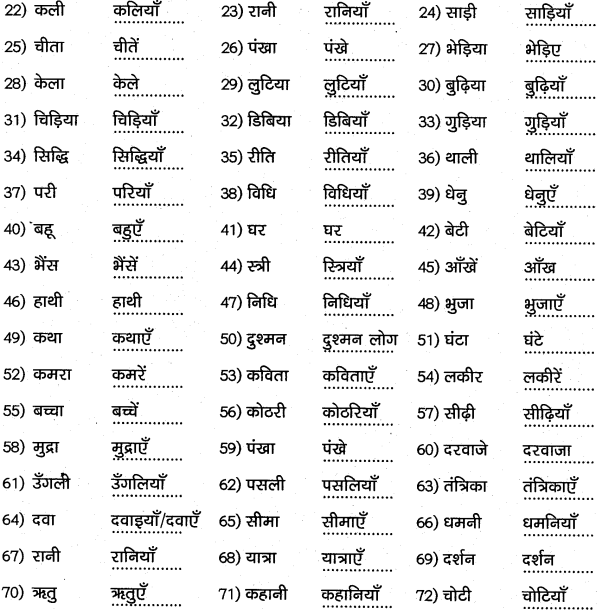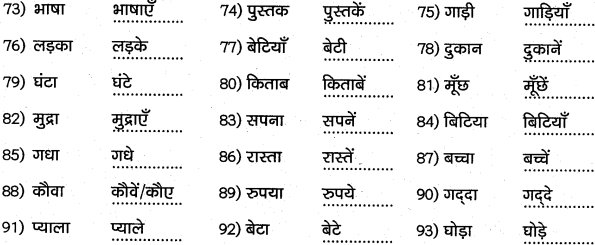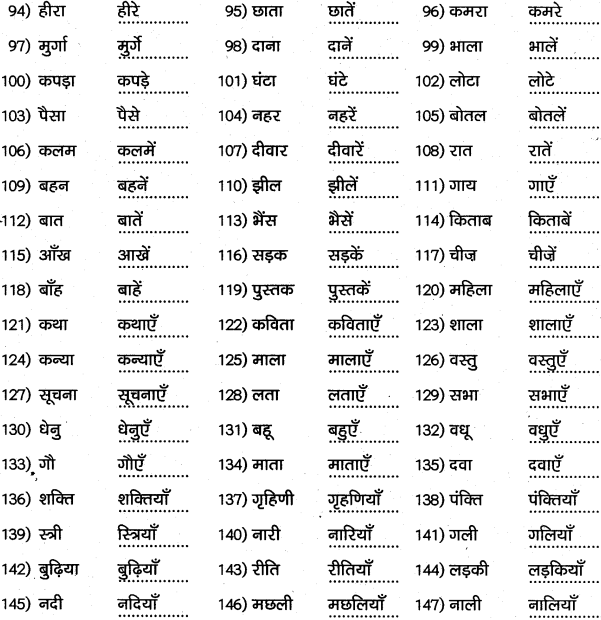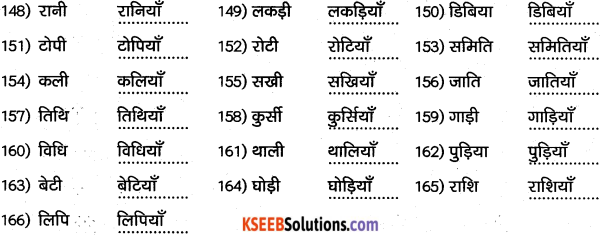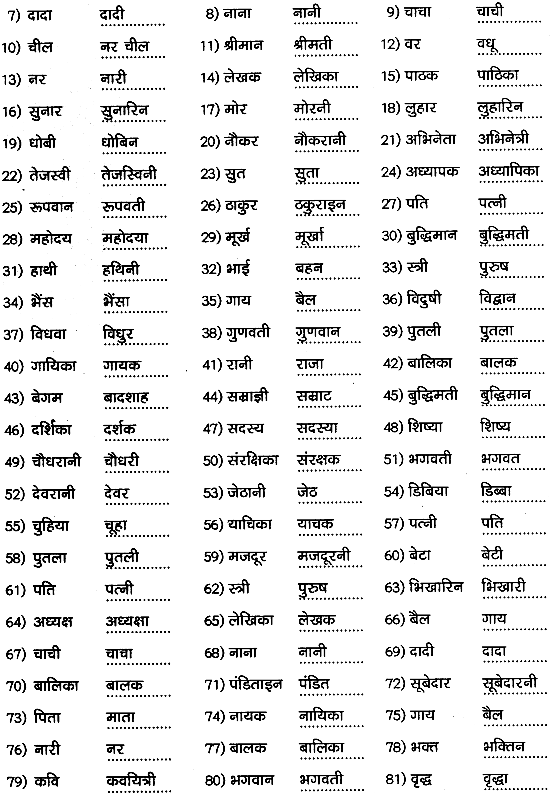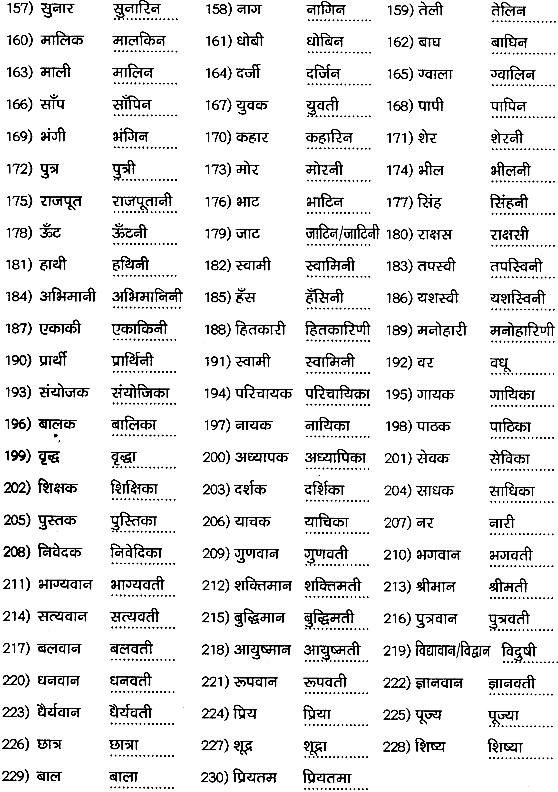You can Download Chapter 2 The Story of Human Evolution Questions and Answers, Notes, 1st PUC History Question Bank with Answers Karnataka State Board Solutions help you to revise complete Syllabus and score more marks in your examinations.
Karnataka 1st PUC History Question Bank Chapter 2 The Story of Human Evolution
1st PUC History The Story of Human Evolution One Mark Questions and Answers
Question 1.
From which language is the term ‘human’ derived?
Answer:
The term ‘human’ is derived from the Latin word ‘humanus’.
Question 2.
What is the meaning of the term ‘homo’?
Answer:
‘Homo’ is a Latin word meaning ‘man’ (inclusive of woman). It’s adjective form is ‘humanus’.
Question 3.
When did the Earth originate?
Answer:
Earth was formed at least 4.5 billion years ago.
![]()
Question 4.
Which was the book written by Charles Darwin?
Answers:
The book ‘Origin of Species’ was written by Charles Darwin.
Question 5.
When did human-like beings evolve on the earth?
Answer:
About 5.6 Million years ago, the emergence of genus Homo, brought human-like beings on earth.
Question 6.
How many years were required for the genus Homo to evolve from the Super family Hominoidea?
Answer:
It took 30 million years for genus Homo to evolve from the Super family Hominoidea.
Question 7.
When did genus Homo come into existence?
Answer:
5.6 million years ago, genus Homo came into existence.
![]()
Question 8.
Which human species was the first to manufacture stone tools?
Answer:
Homo habilis were the first to manufacture and use stone tools.
Question 9.
What was bipedalism?
Answer:
Bipedalism means walking or running on two feet.
Question 10.
Which is the Galaxy where our Earth is a part of?
Answer:
Our Earth is a small object in the Galaxy called the “Milky Way”.
Question 11.
How many years did the earth remain in a molten state?
Answer:
Earth remained in the molten state for Millions of years.
Question 12.
What did the gases released by the Volcanoes create?
Answer:
The gases released by the Volcanoes created the primordial atmosphere.
Question 13.
How many years ago did the Protozoa originate in water?
Answer:
About 500 million years ago.
Question 14.
How are the Hominoida super family species called?
Answer:
Hominoida super family species are called as ‘Hominoids’.
Question 15.
What was the brain size of the Homo erectus species?
Answer:
The Homo erectus species had a brain size of 800-1100cc.
Question 16.
Where did the Hominoids live?
Answer:
The Hominoids lived on trees.
Question 17.
When did the Homo habilis live on earth?
Answer:
The Homo habilis lived on earth about 2 million years ago.
![]()
Question 18.
Where were the fossils of Homo habilis discovered?
Answer:
Their fossils were discovered in Olduvai Gorge, Tanzania by Louis Leaky and his team.
Question 19.
What is the other name for Homo habilis?
Answer:
The Homo habilis were also called as the ‘Handyman’ because of their well-developed hands.
Question 20.
What is Archaic?
Answer:
Archaic means a very early form prior to full development or very old and no longer in usage.
Question 21.
What did the advent of agriculture promote?
Answer:
The advent of agriculture promoted Neolithic revolution.
Question 22.
Which theory can be seen as the evidence to the evolution of different species?
Answer:
‘Survival of fittest’ can be seen as evidence to the evolution of different species.
![]()
Question 23.
Which species are capable of existing on land and water?
Answer:
Amphibians are capable of existing on land as well as in water.
1st PUC History The Story of Human Evolution Two Mark Questions and Answers
Question 1.
Mention any two theories of origin and evolution of Earth.
Answer:
- The Pulsating theory.
- The Big Bang theory.
Question 2.
Which were the two important factors responsible for the formation of Earth’s weather and climate?
Answer:
Earth initially when formed, was a white-hot mass of molten rock. It had frequent volcanic eruptions and plenty of collisions with comets and meteors. One such large collision is believed to have caused the Earth’s tilt and the formation of the moon. These are a couple of important factors along with many others, which formulated the weather and climate of the Earth.
Question 3.
Which were the two Chemicals responsible for the origin of life?
Answer:
Hydrogen and Carbon which were present in the atmosphere were responsible for that.
Question 4.
Which were the two theories proposed by Charles Darwin?
Answer:
‘The theory of natural selection’ and ‘Survival of the fittest’ were his theories.
Question 5.
Which two animals are considered to be the nearest relatives of humans?
Answer:
Chimpanzees and Bonobos are the closest relatives of the human beings.
![]()
Question 6.
Where do we find evidence for the earliest planned hunting and butchery of large animals?
Answer:
The Earliest evidence of planned hunting and butchery of large animals are found at two sites.
- Boxgrove in England is dated to about 5,00,000 years ago.
- Schoningen in Germany is dated to about 4,00,000 years ago.
Question 7.
What does the Steady State Theory state?
Answer:
The Steady-State Theory states that the Galaxies are continuously being formed, filling empty spaces in the Universe.
Question 8.
What does the Pulsating Theory state?
Answer:
The Pulsating Theory states that the Universe expands and then contracts continuously. The repeated expansion and contraction is like a ‘Pulse’.
Question 9.
What does the Big Bang Theory state?
Answer:
The Big Bang Theory states that all the matter in the universe was present at a single place in the form of a hot and dense fireball. A big bang scattered it in all directions creating galaxies.
Question 10.
What are Hominoids?
Answer:
All the species belonging to the Hominoidea Super Family are called Hominoids. They lived on trees. The trees provided them protection from the predators. The Hominoids were food gatherers. They procured food by gathering seeds, nuts, fruits, berries, tubers, etc. they were not meat-eaters.
Question 11.
Mention the two divergent theories about the place of origin of the Humans.
Answer:
The two divergent theories are:
- The Replacement or African origin theory.
- The Regional Continuity theory.
Question 12.
What is Adaptation?
Answer:
Change in the behaviour of a person or a group, in response to new or modified surroundings is called Adaptation.
Question 13.
What are Species?
Answer:
It is often defined as a group of organisms capable of interbreeding and producing fertile offsprings. Humans, Gorillas, and Gibbons are some examples of different species.
![]()
Question 14.
What are Hominids?
Answer:
The species belonging to the Hominidae family are called Hominids. e.g. Humans, Chimpanzees, and Bonobos. The change in climate or ice age had reduced the forests area and they were forced to come on to land to procure food and they gradually adapted to live on land.
1st PUC History The Story of Human Evolution Five Mark Questions And Answers
Question 1.
How was the Earth’s Crust formed?
Answer:
The Earth remained in the molten state for many million years and then began to cool. The volcanic activity got reduced considerably. The gradual cooling of the Earth made the outer side to become solid rock, which is called Earth’s Crust. Further cooling made the Earth’s crust to contract resulting in the formation of mountains and valleys. They are like folds and wrinkles appearing on an apple which is left to dry for a few days. The gases released by Volcanoes created the primordial atmosphere.
The crust was still hot and water was in the form of steam. Further cooling condensed the steam to form clouds and then rains began to pour in torrents. This continuous downpour formed lakes, rivers, oceans, and seas. The rains and winds eroded the valleys and mountains. The erosion formed rocks to break and form tiny particles of sand and mud. The continuous erosion formed soil and the ocean floor.
Question 2.
How was food and shelter responsible for Human Evolution?
Answer:
Hominoids lived on trees. The trees provided them protection from the predators. The Hominoids were food gatherers. They procured food by gathering seeds, nuts, fruits, berries, tubers, etc. They were not meat-eaters. Hominids adapted to land-dwelling.
They began to use caves and extended stone boulders as shelters. These shelters on land provided them with considerable safety from the predators and from rain, wind and the sun. The Neanderthal man was the earliest cave dweller.
The shortage of food made them to scavenge for food. They covered long distances to forage or scavenge for naturally dead animals or leftovers of animals killed by predators. The above activities made them gradually develop an upright posture and consequently the bipedal motion.
This was required for survival. Hominines and the archaic human species added planned hunting and fishing to the already existing gathering, foraging and scavenging techniques. Planned hunting and making tools stimulated the growth in the brain size. The growth in brain size in turn helped them to plan and make better tools.
Question 3.
What was the role of domestication of animals and agriculture in Human Evolution?
Answer:
Domestication of animals was followed by the commencement of agriculture. Humans who were food gatherers and hunters till then now became food growers or food producers. They were prepared to overcome the effects of climate changes like the ice age by adapting to the domestication of animals and agriculture.
Dogs are believed to be the first animals to be domesticated as they were continuously hanging around the hunters’ camps to pick up bones and scraps of meat. They developed a bond and dogs were domesticated. This was followed by sheep, goat, cow, cat, camel, and horse.
Dogs helped humans in hunting and guarding their shelters. The rearing of animals made humans, nomads. Commencement of agriculture is considered as a revolutionary change in the history of human evolution. This was an important aspect of the Neolithic age. Humans began to grow various crops like wheat, rice, millets, etc.
The practice of agriculture is not more than 13,000 years old. It made them lead a settled life. This resulted in the formation of human settlements termed villages and later towns. Villages and towns were the foundations of civilizations.
![]()
Question 4.
What role did bipedalism and stone tools play in Human evolution?
Answer:
The Hominoids were quadrupeds. They walked on all four limbs, but, their forelimbs were flexible. The Hominids gradually adapted an upright posture. Hominines further adapted to bipedalism. The skeletal structure and the muscles also adjusted over a period of time to the upright posture and the bipedal motion, which freed the forelimbs.
The forelimbs developed precision grip and power grip and evolved into hands. This greatly helped in hunting and defending from predators as hands could be used to make tools and also use them. Walking on two legs also provided a greater long-distance vision and helped them to cover long distances without spending much energy.
The use of tools is not confined to only humans. For e.g. some monkeys and apes use stones as tools to break nuts. But use of tools by humans is far more advanced compared to the monkeys and apes. Wood, bones, and stones were used to make tools. They were mainly used for hunting or defending from predators. The use of stone tools is studied as the Stone Age in history.
The making and use of stones tools were responsible to the evolution of forelimbs into hands and also the growth in brain size. The oldest known stone tools are the ‘Oldowan stone tools’ from Ethiopia which are dated to a period 2.6 million years ago. The skill and advancement in making stone tools have made historians to classify the Stone Age as Paleolithic, Mesolithic and Neolithic stone ages.
In the course of time, humans began to produce metals from ores and make copper, bronze and iron tools which are studied in history as the respective metal ages. The Australopithecus species is said to have first used the naturally available stones as tools. But, the making of stone tools from naturally available stones and using them is positively identified to have begun with Homo habilis.
Question 5.
Discuss the place of origin of the modern man.
Answer:
The place of origin of the humans or modern man is a much-debated issue. There are two divergent theories.
- The Replacement or African origin Theory.
- The Regional Continuity theory.
The Replacement (or) African origin theory:
According to this theory, modern human species evolved from the archaic species in Africa. Africa with its nurturing tropical climate consisting of strong wet and dry seasons provided an optimum environment for the emergence of the modern human species. Some of them migrated to different regions of the world at different points of time. They replaced the earlier human-like species in these regions.
The discovery of fossils of the early human species in Africa and the genetic and anatomical homogeneity among the modern humans in all parts of the world are evidence for this theory. The Regional continuity theory: According to this theory, the evolution of different human species from the earlier species occurred in all regions of the world. It occurred in Europe and Asia also as it occurred in Africa. The evolution proceeded at different rates in different regions. The dissimilarities among the human populations in different regions of the world, serve as evidence to this theory.
![]()
Question 6.
Explain the origin and evolution of Earth.
Answer:
There are many theories regarding the origin of earth. But it has not been conclusively proven. The theories only try to unravel the mystery of the origin of the Earth. Some of them are religious or philosophical and the others are scientific. Among the scientific theories like the Steady Earth theory, the Big Bang theory, the Pulsating theory, etc.
The Big Bang theory is the more popular and widely accepted one. Earth is one of the planets in our solar system. But it is the only planet on which life has evolved. Earth is said to have been formed at least 4.5 billion years ago. The temperature then was so high that it was a white-hot mass of molten rock.
It witnessed frequent volcanic eruptions and large collisions. A large number of comets and meteors collided with the earth in its early years of evolution. One such large collision is believed to have caused the earth’s tilt and the formation of the Moon. These factors along with many others formulated the weather and climate of the earth.
The crust was still hot and water was in the form of steam. Further cooling condensed the steam to form clouds and then rains began to pour in torrents. This continuous downpour formed lakes, rivers, oceans, and seas. The rains and winds eroded the valleys and Mountains. The erosion formed rocks to break and form tiny particles of sand and mud. The continuous erosion formed soil and the ocean floor.
Question 7.
Explain the origin and evolution of human life on earth.
Answer:
About 700 million years ago, the basic chemicals in the earth’s atmosphere, namely Hydrogen and Carbon combined to form life in the water. This slowly evolved into primitive water plants. They began to grow and occupy the shallow and warm seas. The water plants gradually adapted themselves and began to encroach on to the land.
About 500 million years ago, Protozoa originated in water. It is considered to be the first form of animal life. Then single-cell beings became multicellular. The primitive life forms like photosynthetic bacteria released oxygen into the atmosphere as they evolved, which made earth more habitable for higher life forms to originate.
Water creatures appeared. Insects and Amphibians came into existence. The Amphibians were capable of existing on land and water as well. Then the reptiles appeared and some of the species among them adapted to become birds. All this diversified life forms took about 400 million years to evolve.
Mammals evolved about 200 million years ago. Horses, Camels, Dogs, etc. evolved around 50 million years ago. Primates made their appearance 36 million years ago. Hominoids evolved and human-like creatures came upon earth’s surface about 5.6 million years ago.
Question 8.
Explain the family tree of the extant species.
Answer:
1. The super family Hominoidea branched into Hominidae and Hylobatidae families. The species of the respective families are called Hominids and Hylobatids. The Hominids that is, Humans, Chimpanzees and Bonobos, Gorillas and Orangutans, diverged away from the Hylobatids that is Gibbons.
2. The Hominidae family branched into Homininae and Ponginae subfamilies. The species of the respective subfamilies were called Hominines and Pongines. The Hominines that is, humans, Chimpanzees, and Bonobos and Gorillas diverged away from the Pongines that is the Orangutans.
3. The Homininae subfamily branched into Hominini and Gorillini tribes. Humans, Chimpanzees, and bonobos branched away from the Gorillas.
4. The Hominini tribe branched into Genus Homo and Genus Pan. That is, the ancestral human species branched away from the Chimpanzees and the Bonobos. As such, Chimpanzees and Bonobos are the closest relatives of the Humans. The evolution of genus Homo from the super family Hominoidea took about 30 million years. The emergence of genus Homo brought human-like creatures on the earth’s surface about 5.6 million years ago.
1st PUC History The Story of Human Evolution Ten Mark Questions And Answers
Question 1.
Discuss the important factors of human evolution.
Answer:
The changing cycles of climate and weather have greatly affected the human evolution to a very large extent. The last 6 to 8 million years have generally seen cooling trends marked by recurring ice ages. The onset of the ice age around 2.5 million years ago covered most parts of Earth with snow and there were major changes in climate and vegetation.
The species which could adapt better to the climatic changes and procure food survived and the others became extinct. The ice age or glacial age-induced the early humans to wear animal skins to keep themselves warm. Many times, new species originated, which adapted better than the earlier ones.
The early species Australopithecus faced gradual extinction and genus Homo (early man) which was better adapted to drier conditions survived. The last ice age witnessed by earth was about 20,000 years ago. Today, we are living in a time that is relatively warm compared to the last 6 to 8 million years. The weather and climate of the earth has played an important role in the origin, evolution, and existence of various species.
Human species evolved larger and complex brains to overcome the environmental challenges and survive against physically powerful animals. The size of the brain in the Homo habilis was 600 cubic centimeters, which was only slightly larger than that of Chimpanzees. The Homo erectus had a brain size of 800 – 1100 cc, the Neanderthal 1200-1900 cc and the Homo sapiens (wise man) of today about 1400cc.
It is more than twice the size of the brains of Chimpanzees or Gorillas. The growth in the brain size induced many activities like improved vision, upright posture, bipedalism, toolmaking, use of fire, planned and skilled hunting, storing food and language.
These activities helped in the development of the brain. Hominoids lived on trees which provided them protection from the predators. The Hominoids were food gatherers and not meat-eaters. Then, they adapted to land-dwelling. They began to use caves and extended stone boulders as shelters.
The Neanderthal man was the earliest cave dweller. The shortage of food made them to scavenge for food. The above activities made them gradually develop an upright posture and consequently the bipedal motion. This was required for survival.
Hominines and the archaic human species added planned hunting and fishing to the already existing gathering, foraging, and scavenging techniques. The earliest evidence of planned hunting and butchery of large animals is traced to two sites.
- Box grove in England dated to about 50,0000 years ago.
- Schoningen in Germany dated to about 4,00,000 years ago.
The Hominoids were quadrupeds. They walked on all four limbs, but, their forelimbs were flexible. The Hominids gradually adapted an upright posture. Hominines further adapted to bipedalism. The skeletal structure and the muscles also adjusted over a period of time to the upright posture and the bipedal motion, which freed the forelimbs.
The forelimbs developed precision grip and power grip and evolved into hands. This greatly helped in hunting and defending from predators as hands could be used to make tools and also use them. Walking on two legs also provided a greater long-distance vision and helped them to cover long distances without spending much energy.
The use of tools is not confined to only humans. For e.g. some monkeys and apes use stones as tools to break nuts. But use of tools by humans is far more advanced compared to the monkeys and apes. Wood, bones, and stones were used to make tools. They were mainly used for hunting or defending from predators. The use of stone tools is studied as the Stone Age in history.
The making and use of stones tools were responsible for the evolution of forelimbs into hands and also the growth in brain size. As planned hunting required co-operation and communication between the hunters, signaling and creating sounds evolved, which slowly developed into languages. The domestication of animals and the commencement of agriculture were other major factors in the human evolution.
![]()
Question 2.
Explain briefly the evolution of man.
Answer:
The study of human evolution is complicated. It involves many. disciplines including Anthropology, Primatology, Archaeology, Linguistics, Embryology, and Genetics. Discovery of human fossils, stone tools, and cave paintings serve as evidence for the study of evolution. Most of such fossils discovered are of extinct species.
They provide a link to the extant species. The fossils which provide evidence to the evolution of man are usually secured by chance. The process of recovery of the Fossils is a very painstaking and laborious task. Fossils are dated directly through chemical analysis or the sediments in which the fossils were buried are chemically analyzed for dating.
Many unanswered questions are being understood with the unearthing of new data and the development of science. The theory of Natural Selection proposed by Darwin, in his famous book, ‘The Origin of Species’ has greatly helped in the construction of the story of evolution.
His theory ‘Survival of fittest’ can be seen as evidence to the evolution and extinction of different species. The reconstruction of human history becomes very difficult as the source or evidence are very ancient, most of the times running into thousands of years.
The ancestral species of all the present Humans, Chimpanzees and Bonobos, Gorillas, Orang¬utans and Gibbons belong to the super family, Hominoidea. They are classified as Primates. They branched out of the Mammals about 36 million years ago. All the species belonging to the Hominoidea Super family are called Hominoids.
1. The Super family Hominoidea branched into Hominidae and Hylobatidae families. The species of the respective families are called Hominids and Hylobatids. The Hominids that is, Humans, Chimpanzees and Bonobos, Gorillas and Orang-utans, diverged away from the Hylobatids that is Gibbons.
2. The Hominidae family branched into Homininae and Ponginae subfamilies. The species of the respective subfamilies were called Hominines and Pongines. The Hominines that is, Humans, Chimpanzees and Bonobos and Gorillas diverged away from the Pongines that is the Orang-utans.
3. The Homininae subfamily branched into Hominini and Gorillini tribes. Humans, Chimpanzees, and bonobos branched away from the Gorillas.
4. The Hominini tribe branched into Genus Homo and Genus Pan. That is, the ancestral human species branched away from the Chimpanzees and the Bonobos. As such, Chimpanzees and Bonobos are the closest relatives of the Humans. The evolution of genus Homo from the super family Hominoidea took about 30 million years. The emergence of genus Homo brought human-like creatures on the earth’s surface about 5.6 million years ago.
Question 3.
Mention the different stages of Human Evolution.
Answer:
About 700 million years ago, the basic chemicals in the earth’s atmosphere, namely – Hydrogen and Carbon combined to form life in the water. This slowly evolved into primitive water plants. They began to grow and occupy the shallow and warm seas. The water plants gradually adapted themselves and began to encroach on to the land. About 500 million years ago, Protozoa originated in water.
It is considered to be the first form of animal life. Then single-cell beings became multicellular. The primitive life forms like photosynthetic bacteria released oxygen into the atmosphere as they evolved, which made earth more habitable for higher life forms to originate.
Water creatures appeared. Insects and Amphibians came into existence. The Amphibians were capable of existing on land and water as well. Then the reptiles appeared and some of the species among them adapted to become birds. All this diversified life forms took about 400 million years to evolve.
Mammals evolved about 200 million years ago. Horses, Camels, Dogs, etc. evolved around 50 million years ago. Primates made their appearance 36 million years ago. Hominoids evolved and human-like creatures came upon earth’s surface about 5.6 million years ago.
1. The super family Hominoidea branched into Hominidae and Hylobatidae families. The • species of the respective families are called Hominids and Hylobatids. The Hominids, that is, Humans, Chimpanzees and Bonobos, Gorillas and Orang-utans, diverged away from the Hylobatids that is Gibbons.
2. The Hominidae family branched into Homininae and Ponginae subfamilies. The species of the respective subfamilies were called Hominines and Pongines. The Hominines that is, Humans, Chimpanzees and Bonobos and Gorillas diverged away from the Pongines that is the Orang-utans.
3. The Homininae subfamily branched into Hominini and Gorillini tribes. Humans, Chimpanzees, and bonobos branched away from the Gorillas.
4. The Hominini tribe branched into Genus Homo and Genus Pan. That is, the ancestral human species branched away from the Chimpanzees and the Bonobos. As such, Chimpanzees and Bonobos are the closest relatives of the Humans.
The evolution of genus Homo from the super family Hominoidea took about 30 million years. The emergence of genus Homo brought human-like creatures on the earth’s surface about 5.6 million years ago. Today we are living in a time that is relatively warm compared to the last 6 to 8 million years.
The weather and climate of the earth has played an important role in the origin and evolution and the existence of various species. Human species evolved larger and complex brains to overcome the environmental challenges and survive against physically powerful animals.
The size of the brain in the Homo habilis was 600 cubic centimeters, which was only slightly larger than that of Chimpanzees. The homo Erectus had a brain size of 800 -1100 cc, the Neanderthal 1200 -1900 cc and the Homo sapiens (wise man) of today about 1400cc.
It is more than twice the size of the brains of Chimpanzees or Gorillas. The growth in the brain size induced many activities like improved vision, upright posture, bipedalism, toolmaking, use of fire, planned and skilled hunting, storing food and language.
These activities helped in the development of the brain. Hominoids lived on trees which provided them protection from the predators. The Hominoids were food gatherers and not meat-eaters. Then, they adapted to land-dwelling. They began to use caves and extended stone boulders as shelters. The Neanderthal man was the earliest cave dweller. The shortage of food made them to scavenge for food.
The above activities made them gradually develop an upright posture and consequently the bipedal motion. This was required for survival. Hominines and the archaic human species added planned hunting and fishing to the already existing gathering, foraging, and scavenging techniques. The earliest evidence of planned hunting and butchery of large animals is traced to two sites.
- Box grove in England dated to about 50,0000 years ago
- Schoningen in Germany dated to about 4,00,000 years ago.
The Hominoids were quadrupeds. They walked on all four limbs, but, their forelimbs were flexible. The Hominids gradually adapted an upright posture. Hominines further adapted to bipedalism. The skeletal structure and the muscles also adjusted over a period of time to the upright posture and the bipedal motion, which freed the forelimbs.
The forelimbs developed precision grip and power grip and evolved into hands. This greatly helped in hunting and defending from predators as hands could be used to make tools and also use them. Walking on two legs also provided a greater long-distance vision and helped them to cover long distances without spending much energy.
Place of Origin of the Humans.
The place of origin of the humans or modem man is a much-debated issue. There are two divergent theories.
- The Replacement or African origin Theory
- The Regional Continuity theory.
Replacement or African origin theory:
According to this theory, the modern human species evolved from the archaic species in Africa. Africa with its nurturing tropical climate consisting of strong wet and dry seasons provided an optimum environment for the emergence of modern human species.
The Regional continuity theory:
According to this theory the evolution of different human species from the earlier species occurred in all regions of the world. It occurred in Europe and Asia also, as it occurred in Africa.
